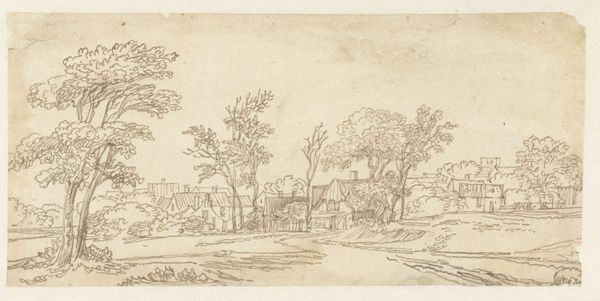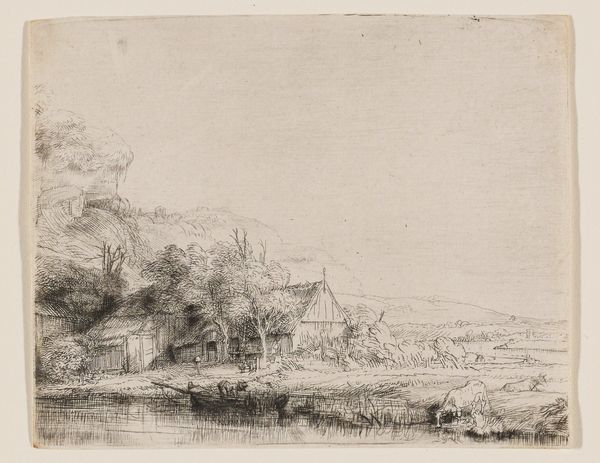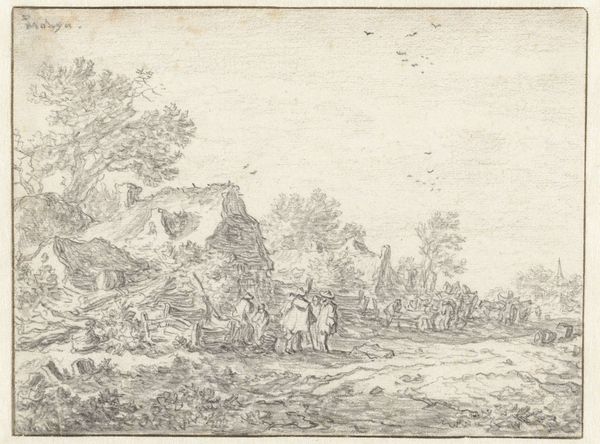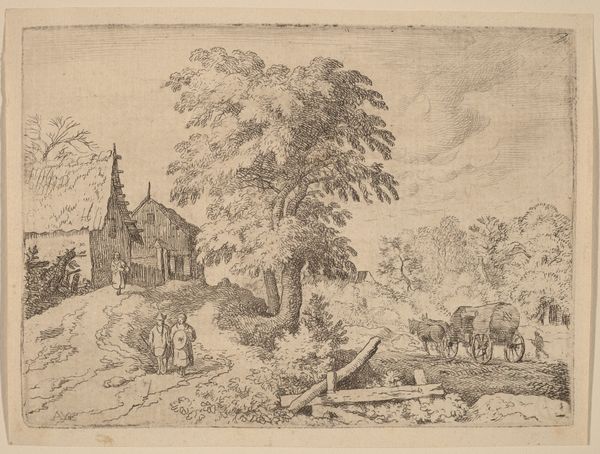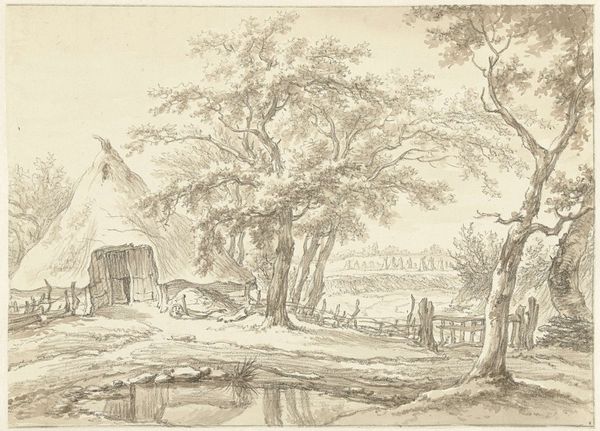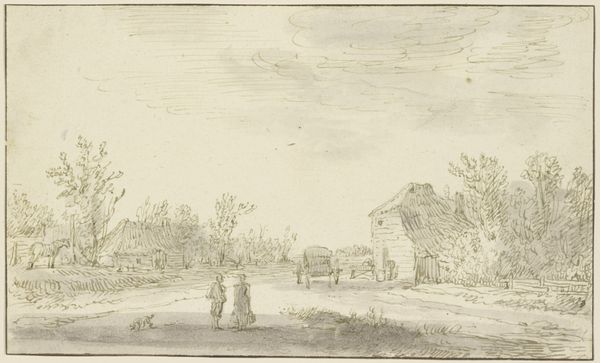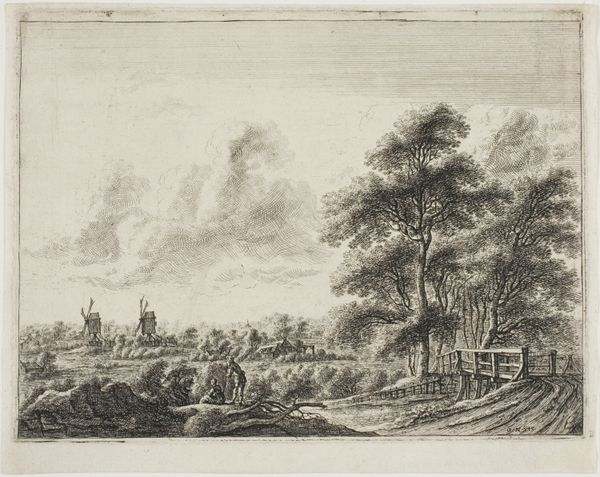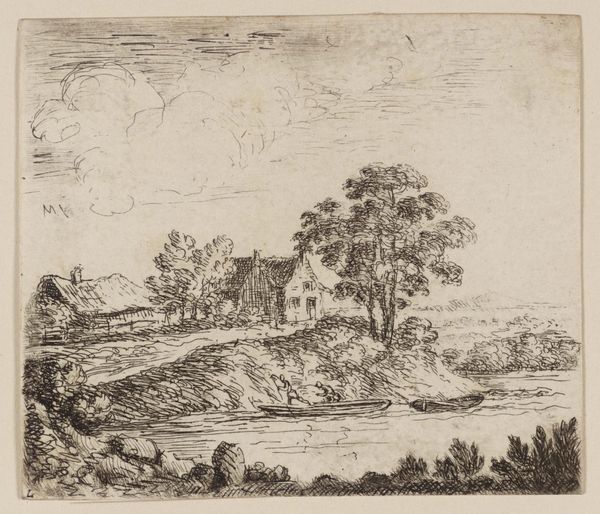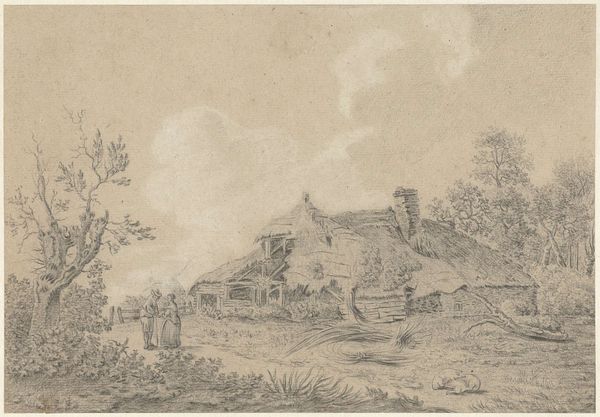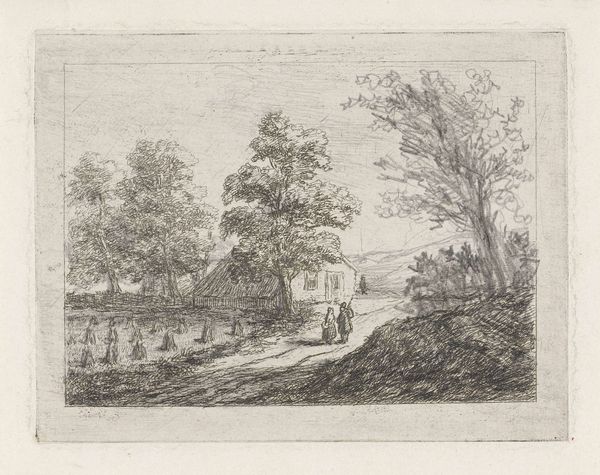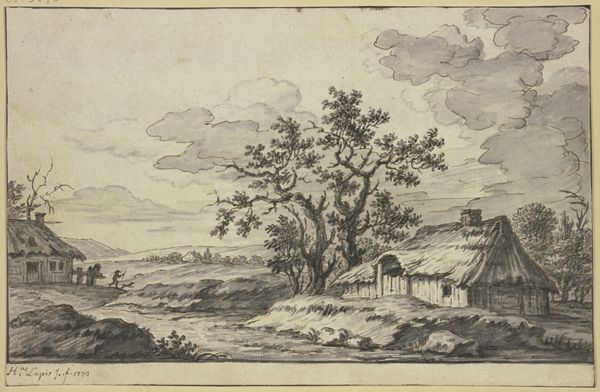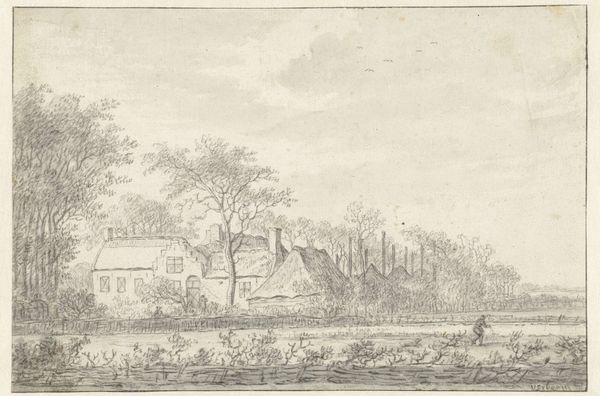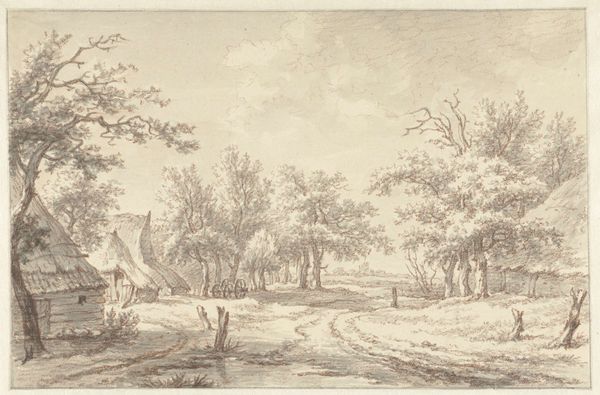
Dimensions: height 84 mm, width 113 mm
Copyright: Rijks Museum: Open Domain
Curator: This is "Landschap met huizen en heuvels," or "Landscape with Houses and Hills," a pen and ink drawing created by Hendrik Willem Schweickhardt between 1756 and 1797. It’s currently held here at the Rijksmuseum. Editor: My initial impression is of a deceptively simple scene, sketched with a playful looseness that belies a complex historical context. The landscape feels both idyllic and faintly melancholic. Curator: Precisely. Schweickhardt was working during a time of great social and political upheaval. Though the Dutch Republic maintained a facade of stability, tensions were brewing, particularly amongst the rural populations who found themselves increasingly disenfranchised. Editor: You see this sentiment of unrest reflected here? Because the presence of figures and buildings gives this drawing more of an aspect of ordinary life than I initially realized. Curator: In the seemingly commonplace nature, yes. These seemingly unassuming farmhouses, rendered with such apparent casualness, represent the economic realities of the time. The contrast between the charming scene and the burgeoning discontent offers a nuanced glimpse into the social fabric. The act of sketching itself became a form of documentation, and, perhaps, resistance. Editor: It makes me think about whose landscape this is, really. Who is allowed to depict it, who profits from it, and whose stories are being overlooked in this idealized rendering. The very act of framing the land this way seems an exercise of power, setting the stage on which ordinary folk perform for an elite gaze. Curator: Certainly, art historical study often brings up considerations of the public role of artwork. That dynamic tension is crucial for a nuanced understanding. It is, after all, displayed at the Rijksmuseum, giving it institutional value whether the artist intended so or not. Editor: Absolutely. By viewing art as a tool for broader narratives we engage in, "Landscape with Houses and Hills," ceases to be just a pleasant countryside vista. It becomes an active participant in discussions around power, representation, and the lived experience of ordinary people. Curator: A vital contribution that shows how we, the public, must challenge and expand institutional definitions of what matters. Editor: This landscape, therefore, gives us insight, even with a modest sketch, into broader landscapes of power and possibility.
Comments
No comments
Be the first to comment and join the conversation on the ultimate creative platform.

